Study on Code Response Time – Barman Corporation #355

Photos

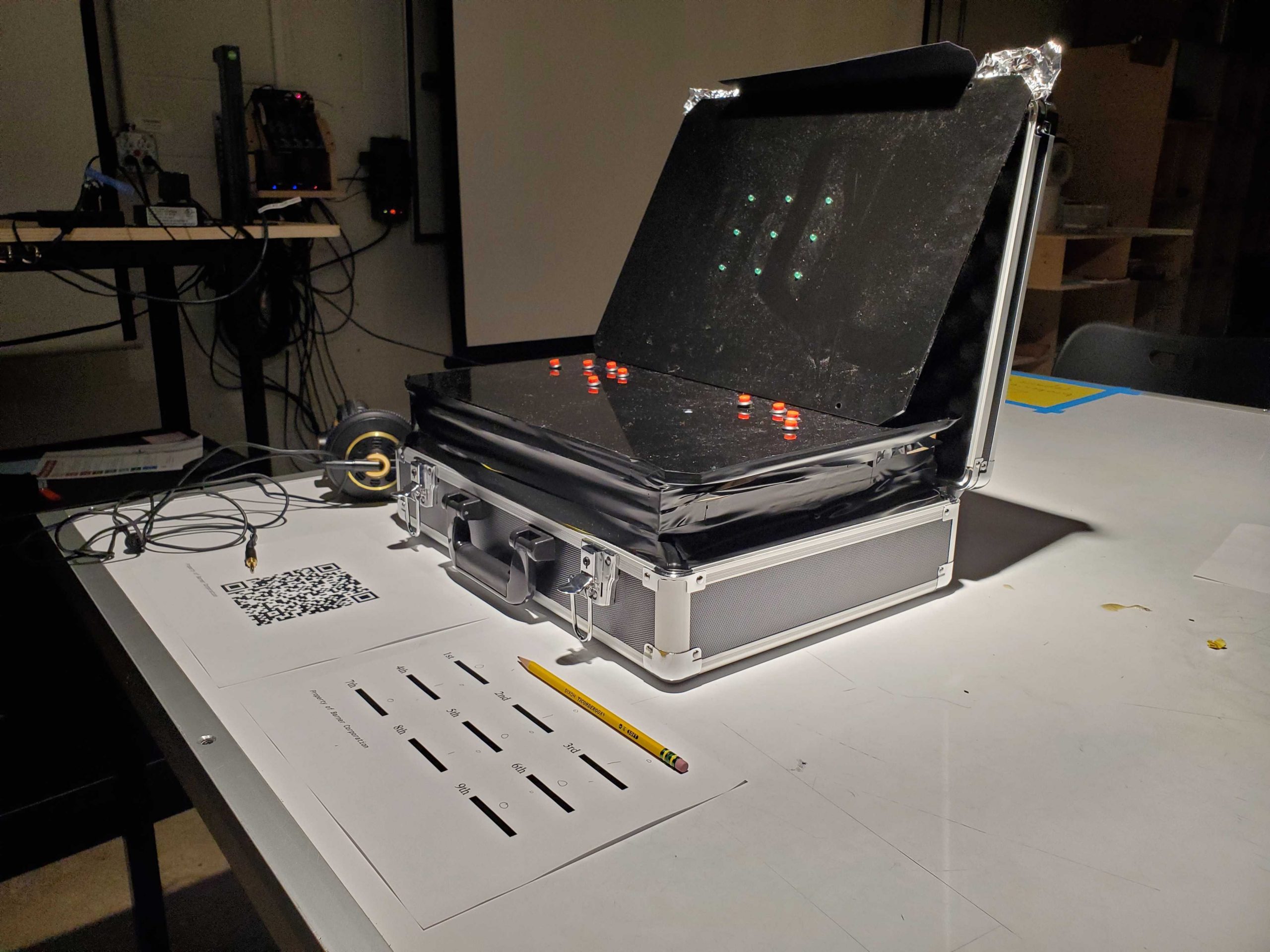
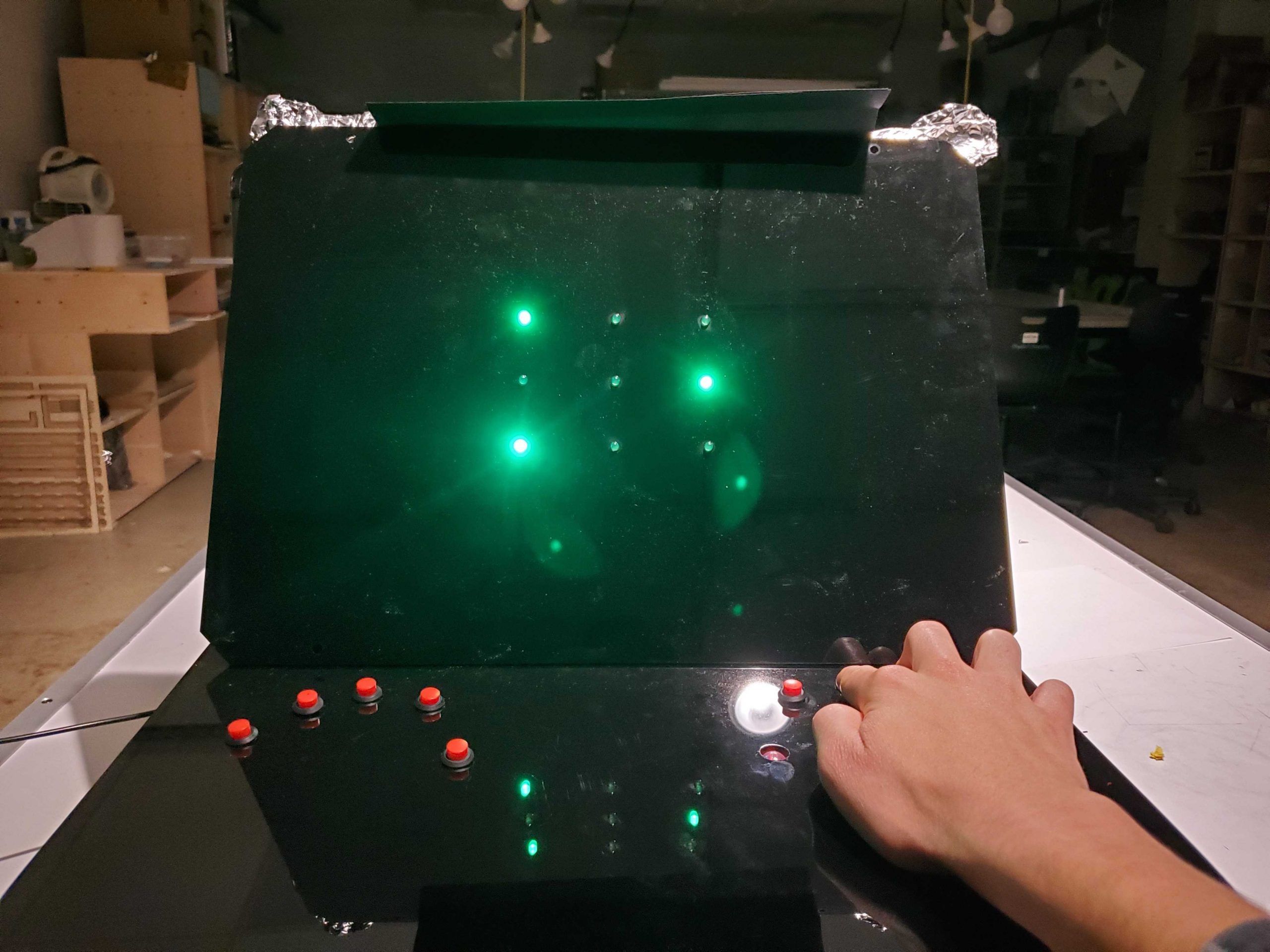
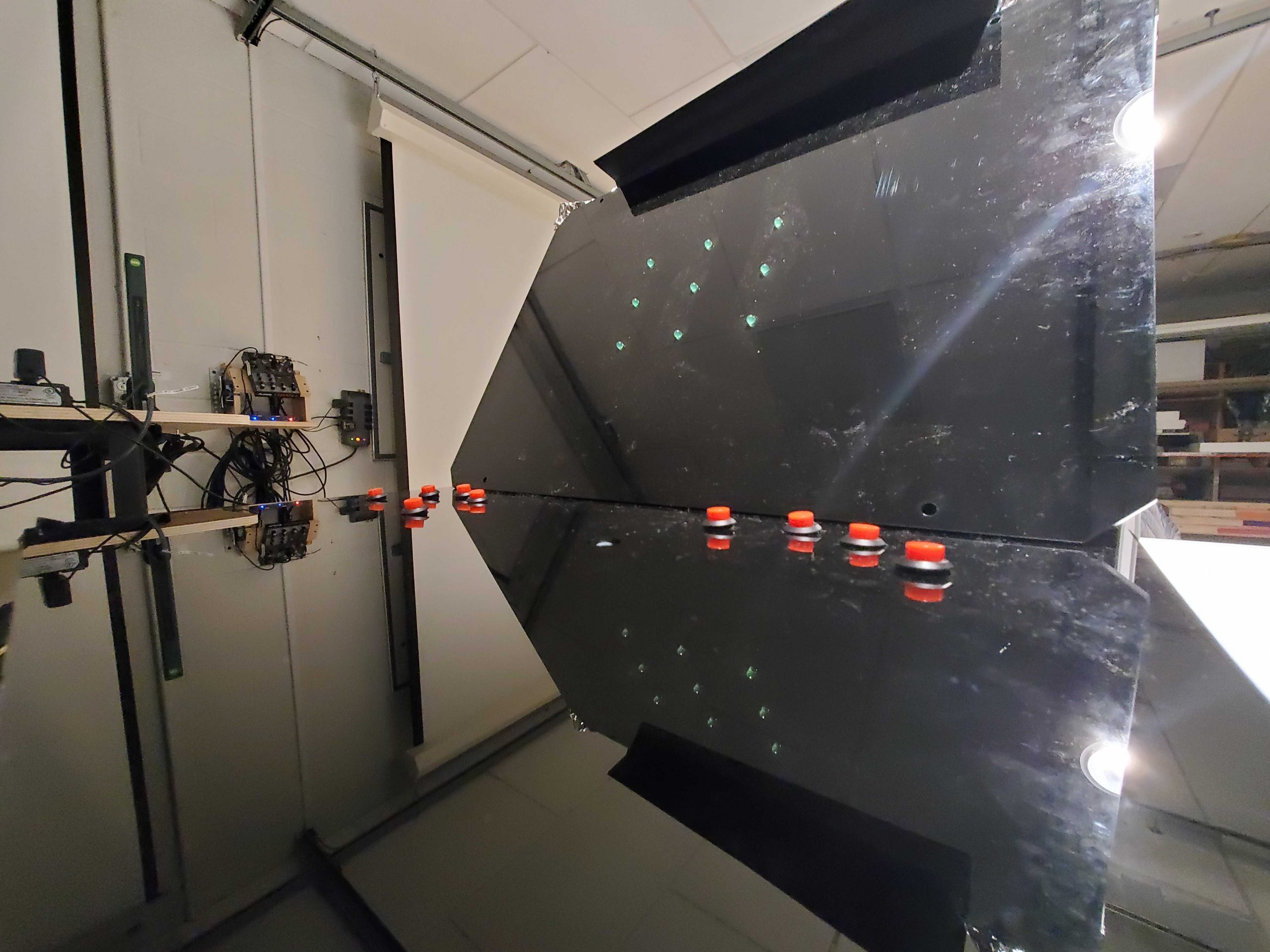
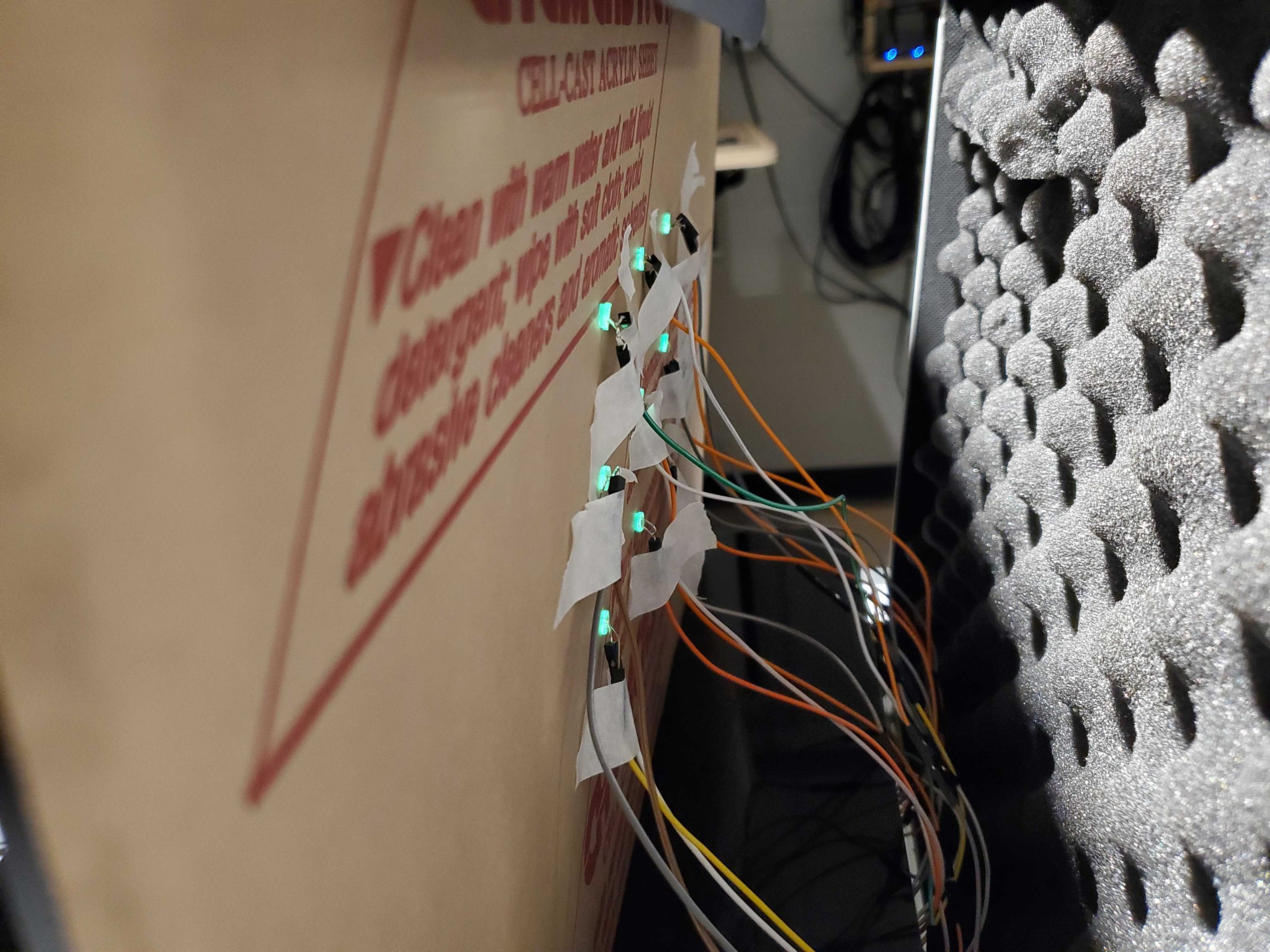
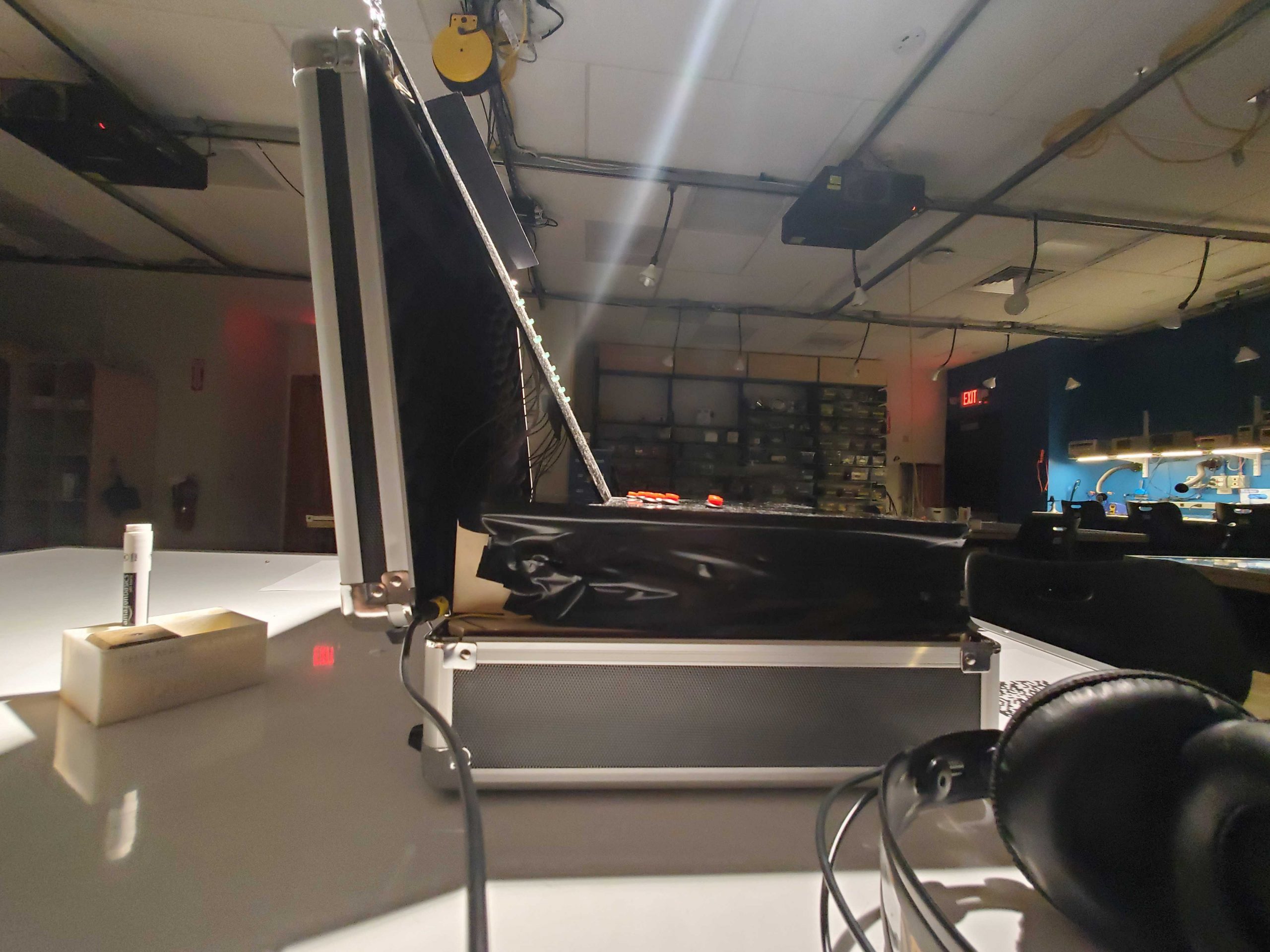

Video
Narrative Description
A suitcase contains two black panels: a panel in front of the lid has a square grid of nine LEDs and a panel on top of the base has 9 buttons arranged in the profile of two human hands. The tenth finger, which does not have a button, has a clear cap that covers two LEDs. In front of the suitcase, there is a QR code, a headset, and a paper template. This template includes nine lines, ordered from first to ninth. The user will scan the QR code, which gives them a link to an audio file, then plug in the headset into their mobile device, and press play on the audio. The recording, narrated by a robotic male voice, introduces the user to a study by the Barman Corporation that they are the main participant of. They are instructed to receive a code from the voice and enter the code via the buttons on the base panel, all within 3 minutes. The user is asked to use the paper template as a guide to help enter the code. When they’ve submitted the code correctly, a blue LED will light up under their right thumb, and they must pause the recording. The voice then starts a 3-minute timer, afterward providing the user with the code: 0 1 1, 1 0 0, 0 1 0. After 12 seconds of silence, a whispered, female voice emerges in the recording. The voice claims that the user is about to launch a missile strike. The user must enter a termination code to stop the strike from occurring and, no matter what, not enter the code provided by the previous voice. After a few seconds, this voice provides the user with the following code: 1 0 0, 0 0 1, 1 0 0. The previous voice then reminds the user that they have one minute remaining. Afterward, the voice thanks the user for their input in the study.
Progression to Final Project
Simplified Circuit –> Maquette –> Full Wiring –> Extended Wiring –> Full Assembly
Simplified Circuit

Simple circuit with three buttons all going through an AND gate (one of the buttons first goes through a NOT gate). All buttons connect to a green LED, and a red LED lights when the circuit output is true.
Maquette

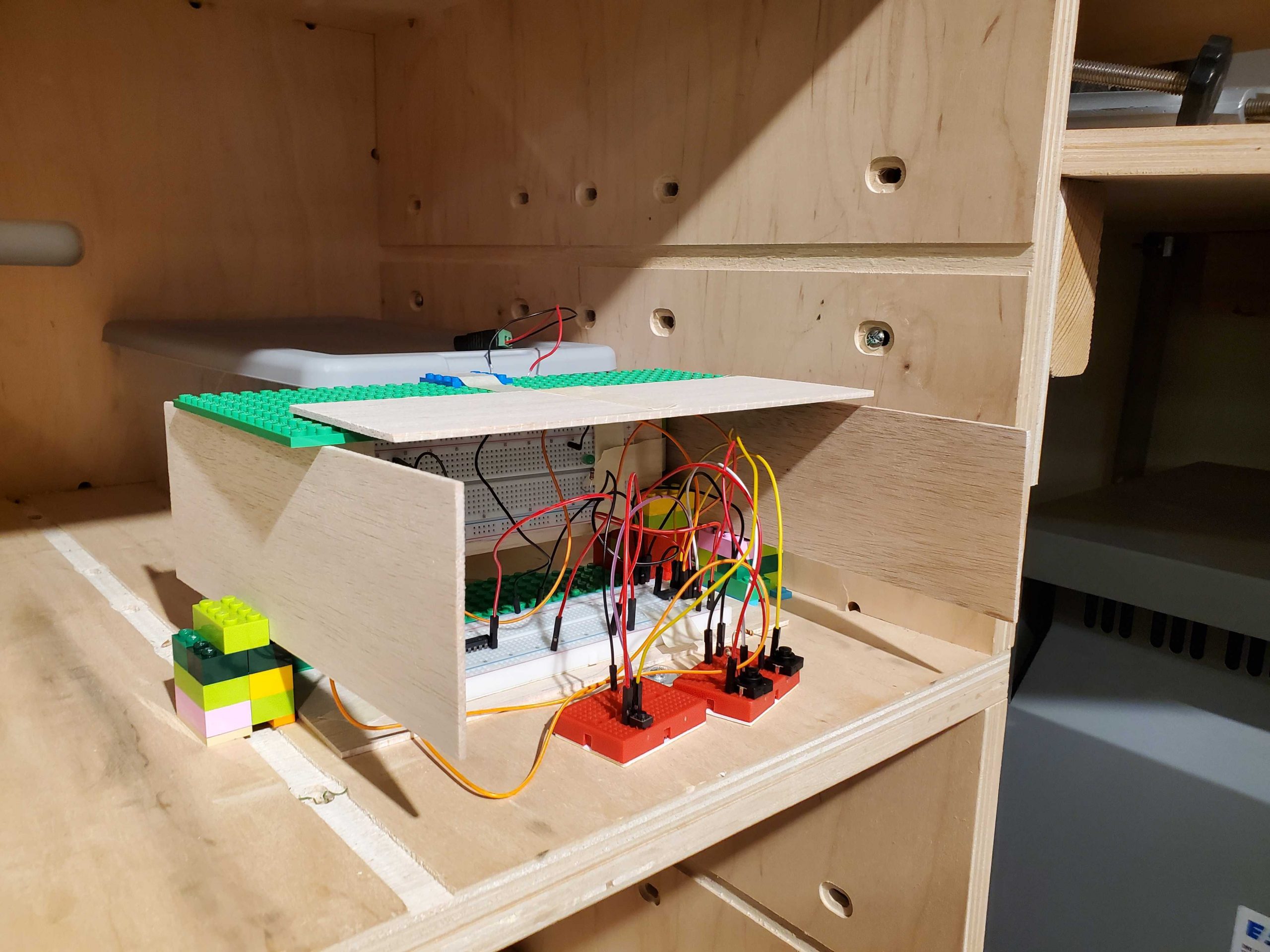
Maquette made out of legos and wood, using the simplified circuit above.
Full Wiring
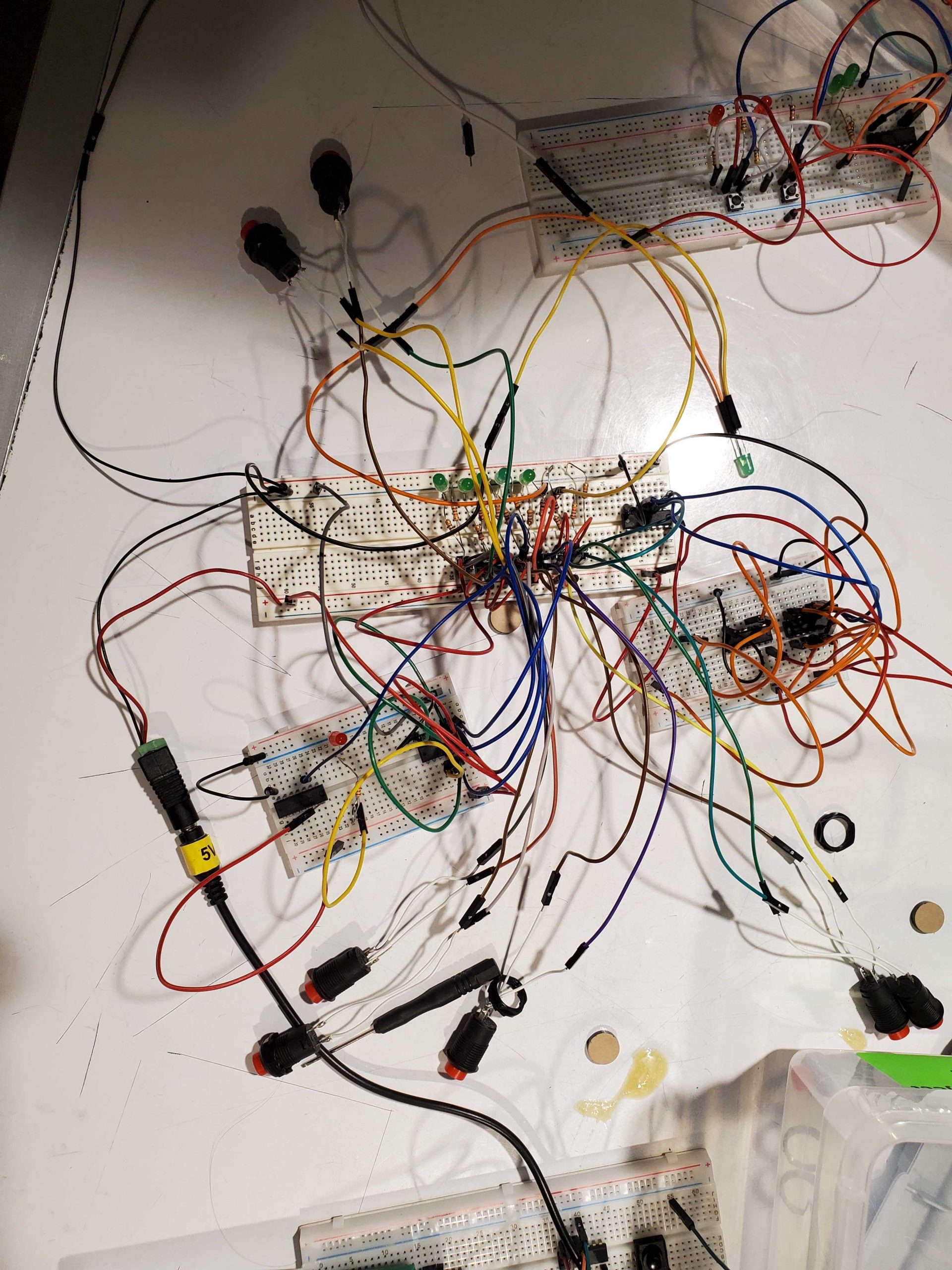
Wiring of all buttons, LEDs, and logical connections to breadboard
Extended Wiring

Extending wire connections for buttons and LEDs to fit into plywood panels
Full Assembly
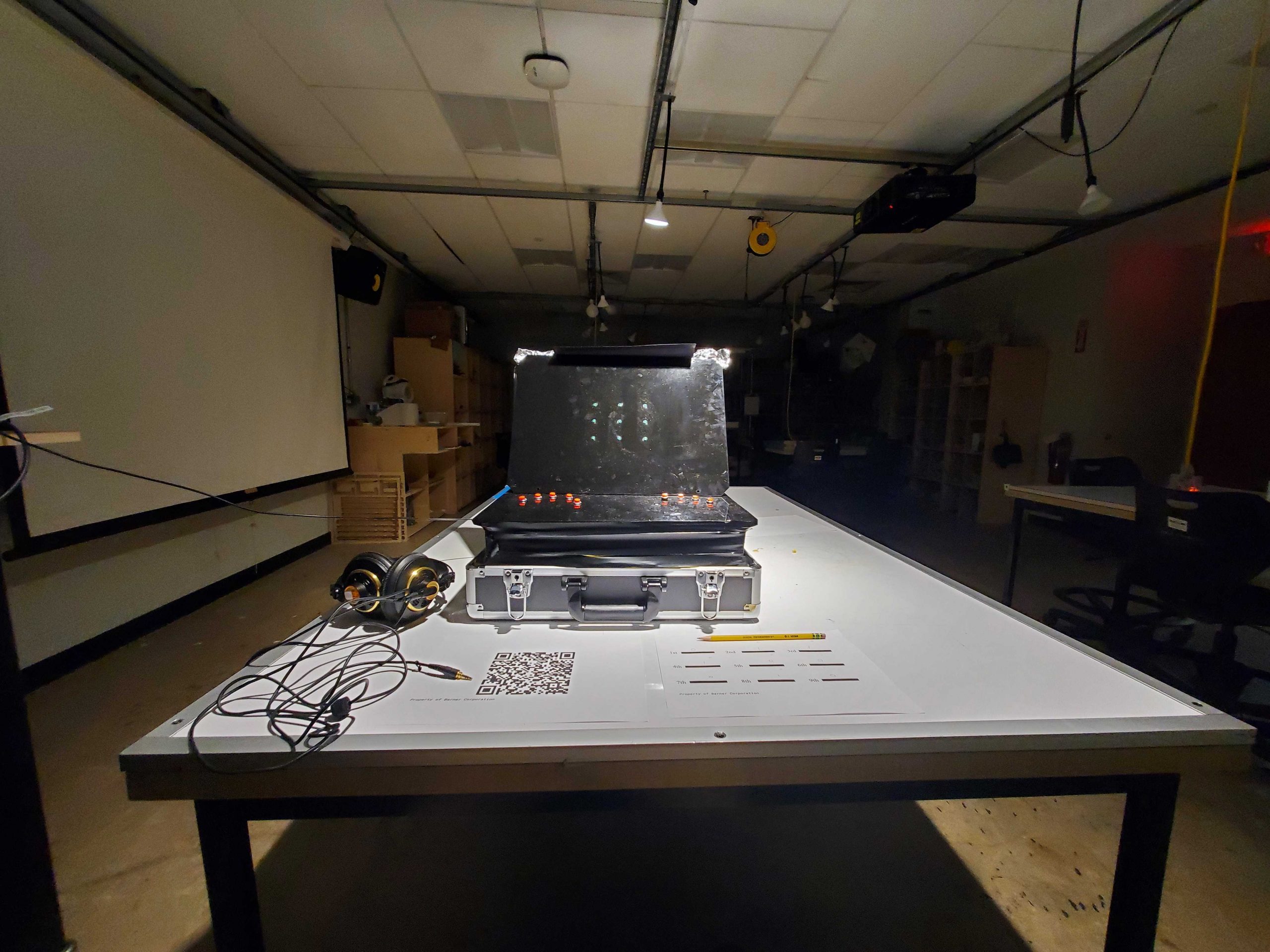
Placing of panels into suitcase, includes QR code, paper code template, and headset
Reflection
Working on this project proved to be tedious, but very rewarding. Coming into this project, I wanted to create a suspenseful game that ran purely on integrated logic circuits. My main idea was to set this game in the CMU steam tunnels, where users would navigate a “robot” through the tunnels until they reached a final destination. The interaction for this would be achieved through a missile control panel, which I thought best suited the environment of suspense. Unfortunately, after a few days of brainstorming, I found it very complicated to model such a game with only logic chips. Wanting to prioritize the use of these chips, I decided to slightly change the scope of my project while still retaining a suspenseful, militaristic game identity. I ultimately took inspiration from nuclear suitcases as the main physical interaction for my project. The new game idea involved a user inputting a code via buttons into a square grid of LEDs, similar to the nine-dot grid found on Android lock screens. To maximize suspense, I used audio, creating a 3-minute recording that contextualized the piece and gave weight to the user’s decisions in the game. I also set the piece in a dark room with one light source lighting it from above.
The build phase for this project was a physically challenging task. My first step was to CAD the assembly, which I did not find very difficult given my previous CAD experience. Using this CAD, I then created DXFs to laser cut every surface. Unfortunately, there were some hole alignment issues with the support struts I made for the panel base, which I ended up fixing by removing one of these struts. After laser cutting, I proceeded to start the wiring process. I wired the logic of the project on a single breadboard and not considering any space considerations. This is when the hardest part of the project appeared: elongating these connections to fit the assembly. Because of the large amount of connections, it was very difficult to replace the wires with longer ones without sometimes missing the ports they were connected to. It was very easy to accidentally unplug some of the wires without realizing. However, I was able to complete this phase, successfully feeding the wires through the button holes. Another challenge arose when trying to feed the LEDs through their holes. This involved closing the panel base sub-assembly. Unfortunately, because of the length of the wires, it was quite difficult to close and feed the wires through to the lid panel (where the LED holes are). I had to extend the wires again to be able to reach these holes. With all of the wiring, the whole assembly did not fit into the suitcase. So, I had to use the foam inserts that came with the suitcase to prop up the assembly from the bottom.
Overall, the electronics of the project worked and were reliable. The major issue of the design was the lack of thought with wiring. I severely underestimated how much space wires can take up and how tangled they can get. As a MechE, wiring is a design consideration I had never really encountered before; working on this project gave me really valuable insight and experience on this. Another issue I struggled with in this project was the idea of meaningful interaction. Previously, with the steam tunnel idea, I was envisioning the project to be a purely arcade experience. However, this is not a very impactful environment, and I wanted my project to be meaningful in some way. I ended up taking inspiration from the experiences of soldiers in missile command centers: they have the power to destroy with the click of a few buttons. This is detailed in my artist’s statement below.
Artist’s Statement
My aim with this project is to recreate an experience inspired by soldiers at missile command centers. With just the press of a few buttons, they can cause destruction and tragedy. They are given an inhumane level of power and control over many lives. Despite this, there are stories where their humanity saved the world. One such story occurred in the USSR in 1983, where officer Stanislav Petrov received missile attack warnings from the United States while stationed at a command center. He interpreted the warnings to be a false alarm; this turned out to be true of course. Instead of following usual protocols, which would have likely resulted in nuclear warfare, Petrov disobeyed them. This decision fascinated me; it demonstrates how the actions of just one person can affect the fate of the world. This event is at the core of my project.
This project provides interaction through physical, visual, and auditory means. It is a briefcase with an acrylic black board in front of each interior panel. The lid panel board has nine green LEDs arranged in a square, and each of these LEDS is mapped to a button in the base panel board. These buttons are arranged in a bird’s eye view of a hand. Under the right hand thumb, there are two LEDs to indicate when two certain combinations of buttons are pressed. The user begins their experience by listening to an audio recording, which explains their involvement in a fictional study. Users must enter the correct combination that is presented in the audio recording. However, the recording also reveals that this combination activates a missile strike, and it provides an alternative combination to stop the strike from occurring. Otherwise, inputting the first combination or not inputting anything will initiate the strike. This all occurs within 3 minutes, so users are given a short amount of time to make a decision.
Having such a plot creates a suspenseful environment and puts more meaning into the user’s decisions. Ultimately, the goal with this is to manifest the consequences of seemingly simple actions; this gives users insight on how much weight their actions truly have in life. Like the actions of Petrov in 1983, one’s actions can have a drastic effect on the state of the world, and this is crucial for people to be cognizant of.
Sources
Voices in Recording –> https://voicemaker.in/
Info on 1983 USSR Nuclear False Alarm –> https://en.wikipedia.org/wiki/1983_Soviet_nuclear_false_alarm_incident
Missile Countdown Recording –> https://youtu.be/ATznMAs-vfA
Video:
- Subject #355 –> Gabriel Prado
- Cameraman –> Katarina Garcia